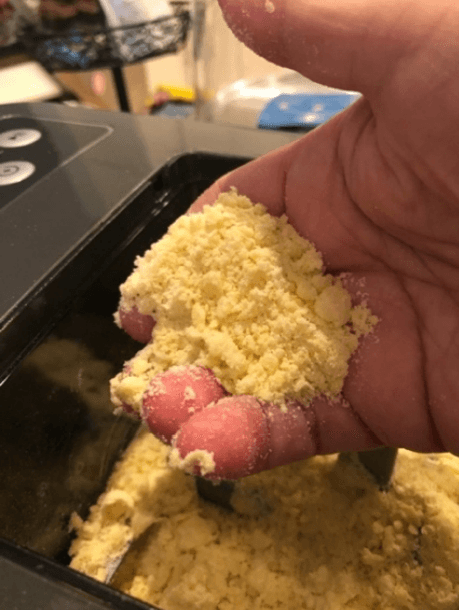If you're used to making pasta by hand or with a manual machine, working with extruded dough may feel like a completely different experience. Unlike traditional dough, extruded dough requires a grainy texture. This isn’t a mistake – it’s the ideal condition for achieving good results with pasta dies.
The correct consistency should resemble coarse sand. When squeezed in the palm of your hand, the dough should compact easily; when rubbed between the fingers, it should crumble again.

A good method is to mix the dough, pause the machine just before extrusion (depending on the model), and turn it off. After a short rest, restart and mix again. In some cases, letting the dough rest for 20–30 minutes helps the flour absorb moisture more effectively.
For this reason, it’s best not to add extra liquid until the final mixing phase is complete. If the dough seems very dry, simply letting it rest is often enough to improve hydration naturally. Conversely, dough with high hydration can become too soft and difficult to extrude if left to rest too long.
As a general rule, with proper hydration, it’s advisable to mix twice before starting extrusion.
If extrusion is difficult, the cause is often incorrect hydration. In these cases, it can help to remove the die, break up the accumulated dough, put it back into the machine, clean the die, and start over.
Sometimes, after turning off the machine, you might have trouble restarting it. Here's what to do:
The machine is also programmed to reverse periodically during extrusion – this creates what we call a “dough coil.” Break it up with your fingers, put it back into the machine, and let it extrude again.
If you need the machine to extrude for longer, switch to extrusion-only mode: turn off the machine, reset it, and press only the “Extrude” button. Repeat as needed until all the dough is extruded.
When making long pasta, keep one hand under the pasta to guide it – this really helps.
Eggs are used to make pasta that will be rolled into thin sheets, such as:
Most pasta served in broth is made with egg-based dough, except for a few cases like riso or risone. Eggs give the dough structure and richness, making it more elastic and less soft.
Semolina and water are ideal especially for extruded pasta, for example:
You can use lukewarm water (around 36°C–40°C), but room temperature water is recommended. Adding eggs to these shapes may alter the flavor and make the pasta rubbery.
Article written with the contribution of Elise Avella Feiner.